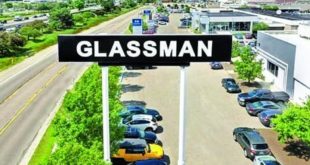Chevrolet dealer Kris Cox struggled to obtain a Paycheck Protection Program loan through a bank his dealership had worked with for decades. But less than a week after he contacted GM Financial, Cox received the funds for his store.
“I didn’t really know that a captive could help dealers in that way, which is why we started our process with the banking relationship that we had,” said Cox, CEO of Cox Chevrolet in Bradenton, Fla. “We just didn’t know or understand that a captive can do that. I don’t believe the captives knew that they could do that until the situation presented itself. And in GMF’s case, they … quickly started communicating with the dealers that they were working on ways to help us if we needed it.”
As a captive, GM Financial couldn’t provide the funds, but it connected dealers with a bank that could.
“The whole value proposition came together suddenly,” said Jonas Hollandsworth, COO of GM Financial’s North American operations. “While everything else was fraught with uncertainty, I feel like we provided certainty for dealers.”
General Motors’ captive finance company has stepped up for its dealers during the pandemic, stoking sales with big incentives, offering floorplan payment relief and helping dealers secure federal funding.
Each service is a sign of GM’s relatively young captive strengthening its foundation at just the right time — the start of a recession. And the efforts have helped GM Financial reach its goal of displacing Ally as the true captive and primary source of floorplan financing for GM dealers.
More than 90 percent of GM dealers received Paycheck Protection Program loans, and GM Financial helped 27 dealers who were unable to access the program on their own.
“As a captive our mission is to support sales, retention and support dealers through all economic cycles,” said Hollandsworth. “As far as supporting dealers through economic cycles, really this is our first big opportunity.”
Dealers say GM Financial’s communicative nature and willingness to take dealer feedback sets the captive apart and motivated many dealers to convert to GM Financial for floorplan financing. In the second quarter, the captive reached its goal of floorplanning 30 percent of GM dealerships, overtaking Ally, which had a preferred partnership with GM before GM Financial was formed in 2010.
GM established General Motors Acceptance Corp., the industry’s first captive finance company, in 1919. In 2006, GM sold its majority stake in the company to raise cash, and in 2009, the automaker cut its stake further as part of its government bailout and bankruptcy restructuring. In 2010, the GMAC business was rebranded Ally Financial, an independent bank that continued to provide financing to GM dealers and customers. Three years later, GM sold its remaining ownership of Ally.
Over the past few years, Ally has expanded used-vehicle financing as its share of GM business decreases. In the second quarter, 60 percent of Ally’s auto loan originations were for used vehicles.
GM purchased subprime lender AmeriCredit in 2010 and turned it into GM Financial. Since then, GM Financial has been working to return a profit to GM and recruit more dealers to its portfolio, challenging many dealers’ tried-and-true partnerships with Ally/GMAC.
Since October 2018, the captive has paid GM $ 800 million. It will continue to return a cash dividend to GM at least annually until it consistently holds 50 percent of GM retail sales penetration in the U.S. and doesn’t need to retain capital to support growth. GM Financial financed 43 percent of GM’s U.S. vehicle sales last year.
At the onset of the pandemic in March, GM Financial, in partnership with GM, began offering 0 percent interest, 84-month loans and deferred payments of up to 120 days to customers in top credit tiers. Customers who didn’t qualify for the 0-for-84 offer received other promotional rates. The incentives drove second-quarter retail loan originations up 22 percent from the previous year even as many dealerships had to temporarily close or limit operations because of the pandemic.
Dealers also received a bonus flat fee from GM Financial without increasing the customers’ rate.
“You had a competitive customer program, but at the same time it was focused on dealer profit as well. That came together very nicely and really timely,” Hollandsworth said.
The captive also offered dealers floorplan payment relief and guaranteed that their dealer dividend payment, which is based on retail loan penetration and other factors, would be consistent with the previous month.
GM Financial had offered payment relief for customers in the past, but the pandemic marked the first sweeping offer on the floorplan side.
The captive’s latest version of its dealer dividends program also launched at the height of the pandemic, on April 1. The iteration allows dealers to put their bonus dollars toward operations to offset floorplan costs, for example. Previously, the funds were reserved for customer rebates.
“The matrix of how you earn the dividends is easier to follow and simpler,” said Keith McCluskey, dealer principal at McCluskey Chevrolet in Cincinnati. “It works out to be more beneficial to the dealer, and you can earn more dividends and convert those to cash at month end.”
Sales increased about 25 percent — or by 100 vehicles — per month since McCluskey signed on with GM Financial. He says the increase would be even higher without the impact of the pandemic.
Dealers say that especially now, at the start of a recession, a relationship with the automaker’s captive is crucial.
“Sometimes when [the financing relationship] is one dimensional, when times are bad, that relationship can sour or change quickly,” said Ryan LaFontaine, COO of LaFontaine Automotive Group in Michigan. He also is on GM Financial’s dealer council.
The dealership group has floorplanned with GM Financial since the captive began offering floorplan financing, largely because of GM Financial’s ability to understand and support the scope of auto retail, LaFontaine said.
A dealership has many layers, he said. There’s the mortgage, potentially revolving lines of credit, working capital and floorplan rates.
“But then there is also the day-to-day customers coming in and financing or leasing,” LaFontaine said. “We need [captives] as much as they need us to be able to grow and provide for our customers. In the good times and bad, we can depend on them.”
Mike Bowsher, owner of Carl Black Automotive Group in Kennesaw, N.C., signed a contract to floorplan with GM Financial last month after more than three decades with a bank provider. Carl Black still has a positive relationship with the bank, Bowsher said, but the lender doesn’t have a vested interest in GM or its dealers.
“GM Financial is 100 percent not only focused on helping the dealer grow his GM sales, but also GM dealer profitability,” Bowsher said. “They’re 100 percent focused on helping dealers be profitable. I have not seen my people this happy in about 15 years.”


